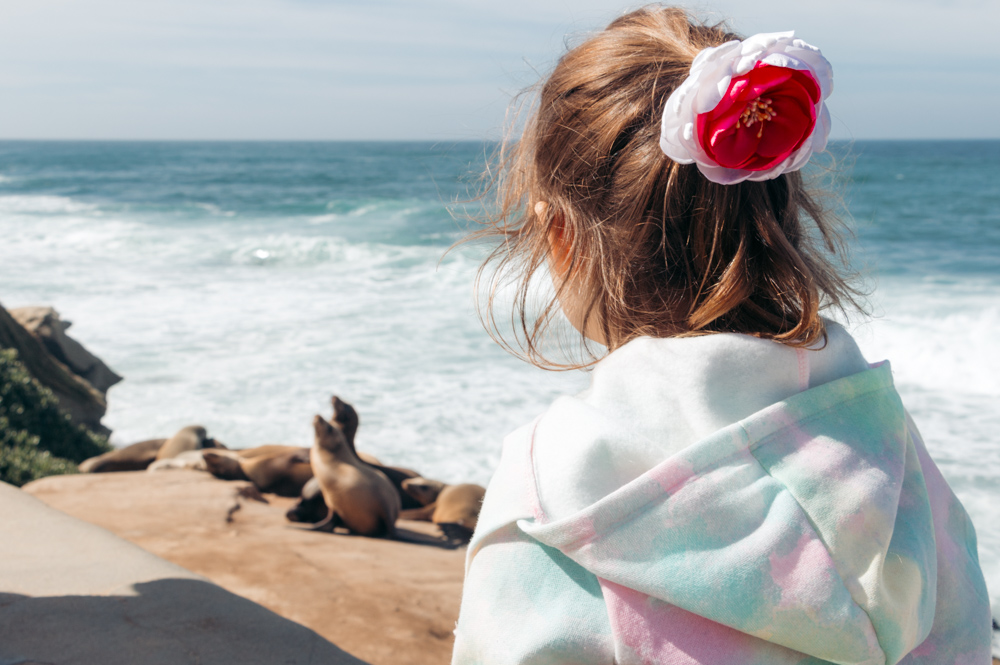Mediterranean climate of San Diego and its underwater world rich in marine life entices a large colony of Pacific harbor seals and California sea lions. During the day, these pinnipeds forage in the deep waters off the coast. In the morning or late afternoon, most of the San Diego seals and sea lions can be found basking in the sun along the sandy beaches of La Jolla.
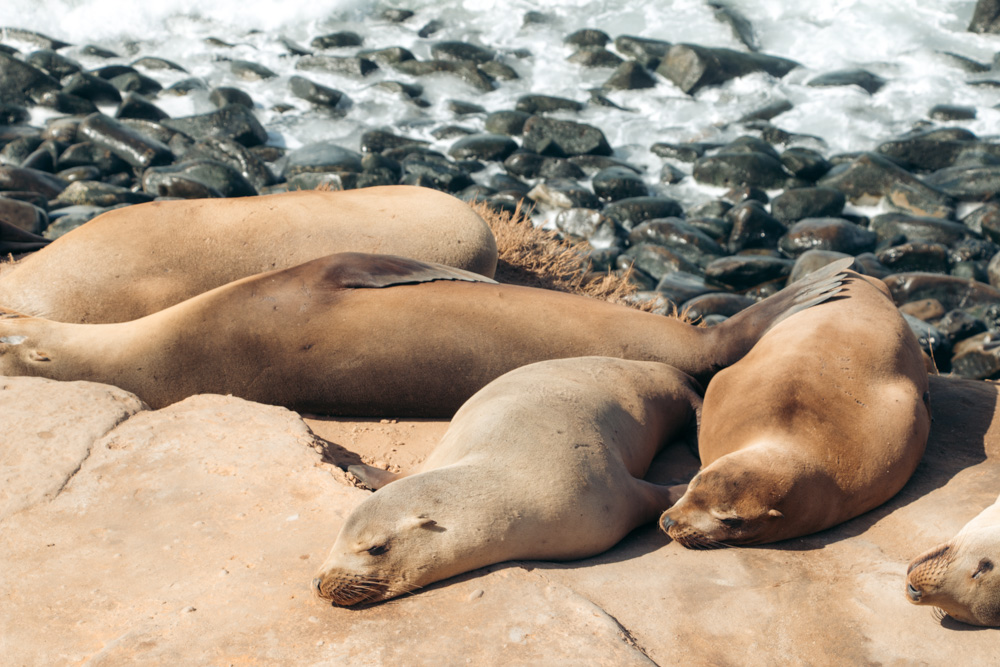
The Best Places to See Seals and Seal Lions in San Diego: La Jolla’s Rookery and Haul-Out Sites
It’s been a while since the San Diego seals and sea lions has expanded their territory along the city’s coastal neighborhood of La Jolla. Unbothered by huge crowds that gaze at the marine mammals in amazement from a boardwalk that runs along the coast, the pinnipeds soak up the sun all year round.
During a short window from December through May, you can even witness the birth of a baby seal. The sight is beyond anything you can ever imagine. New life is beginning right in front of your eyes. A new member joins the extended family of the San Diego seals and seal lions.
I saw my first group of local pinnipeds in La Jolla a few years ago. Oblivious to the surrounding noise and commotions, the marine creatures laid on the sandy beach so close to each other that they had hardly any room to move. And they didn’t move…
Finally, a seal pup separated from her mom and clumsily crawled to the ocean. The sight, so familiar in this part of Southern California, stole my heart. No other visits to San Diego would go by without us making at least a short stop at the La Jolla’s shore to watch the local seals and sea lions in their natural habitat.
The Story of the San Diego Seals and Sea Lions: How the City Became Their Home
Attracted by the shallow, warm waters, rich in marine life, Pacific harbor seals and California sea lions has hauled out in the coastal areas of San Diego for decades. Some locals say even centuries.
The first recorded mention of the seals in San Diego dates back to January of 1887. City Engineer M.G. Wheeler surveyed the La Jolla area and documented his observation in a map. Along with the detailed scatches of the streets and buildings, he outlined the shapes of “Seal Rock” and “Seal Rock Place”.
The population of the San Diego seals and sea lions grew rapidly after construction of the La Jolla Sea Wall at Casa Beach in 1931. The beach that soon was renamed to Children’s Pool aimed at providing a save environment for local young beachgoers.
The kids, however, were not the only ones that favored the sandy stretch of coastline protected from the forces of the ocean waves. Shortly after the breakwater was erected, a colony of seals claimed the beach.
For nearly 40 years, the pinnipeds and people shared the beach. Yet some locals took this rare opportunity to have the marine wildlife right at their doorstep for granted. Extensive hunting and harassing of the seals and sea lions led to their almost complete disappearance from the San Diego’s shores.
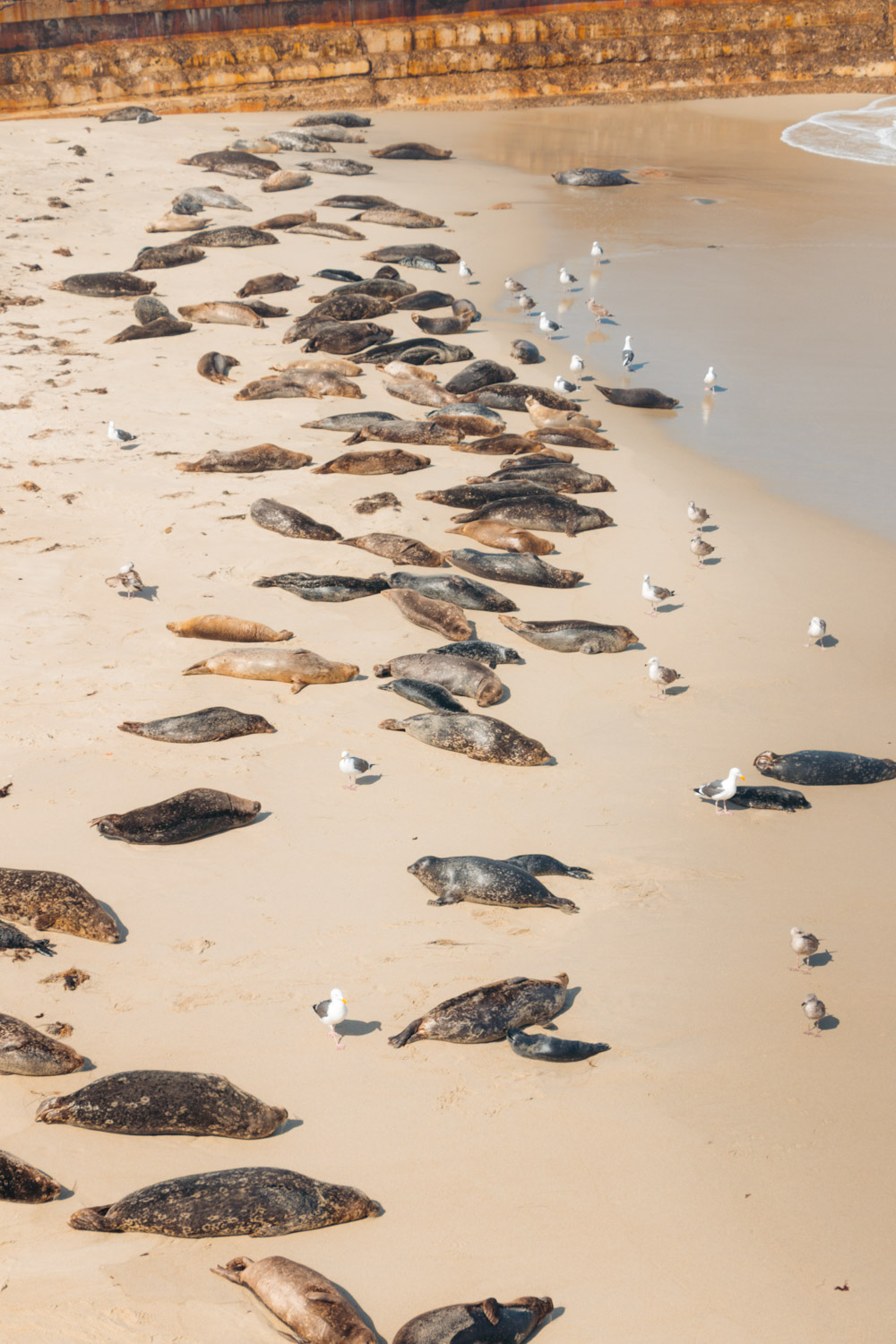
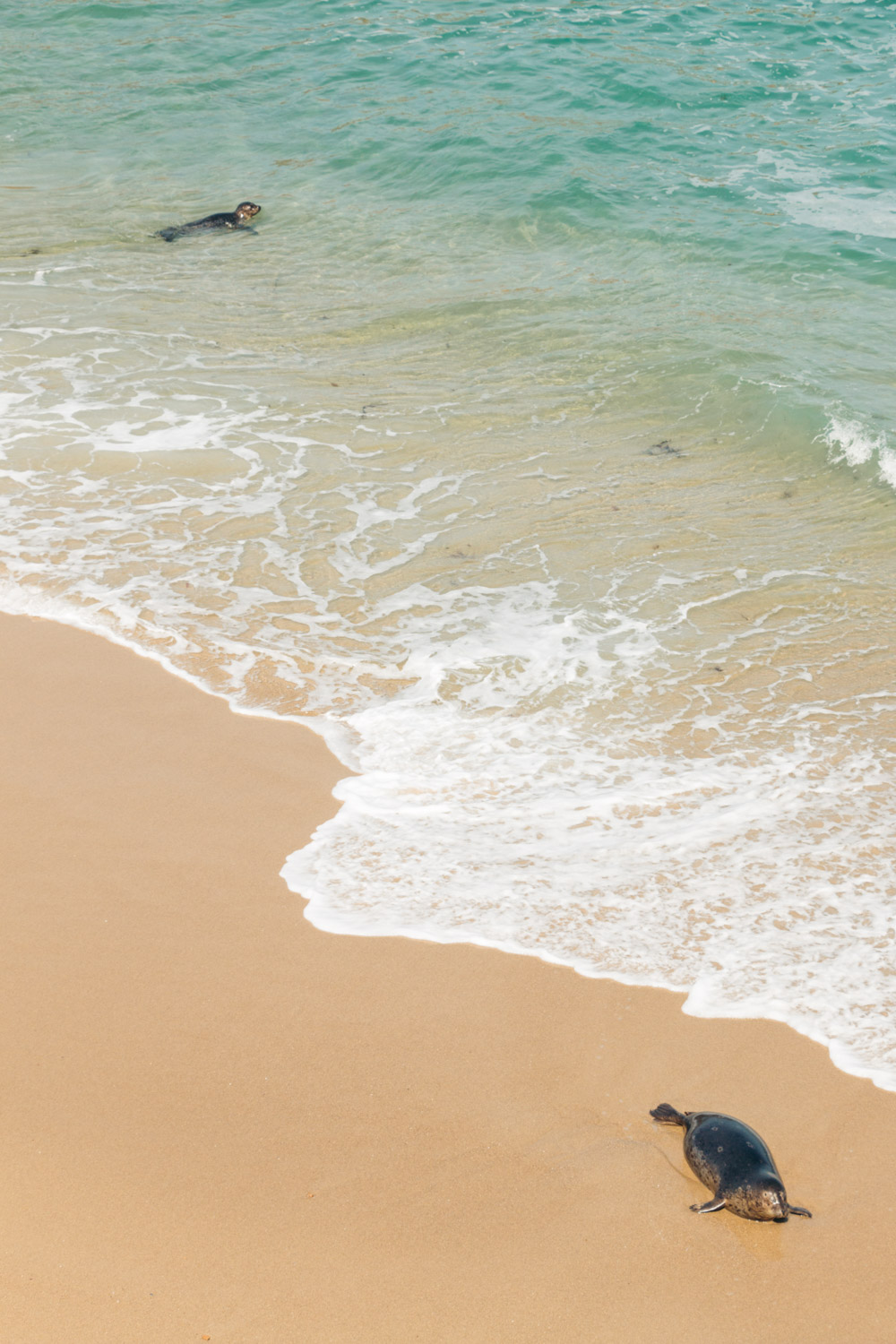
San Diego Seals and Sea Lions’ Harassment and Protection
In 1972 Congress passed the Marine Mammal Protection Act that prohibited killing and disturbing all marine mammals. Slowly the San Diego seals’ population started to grow once again. In the early 90s more seals began to haul out on the sandy Children’s Pool Beach. Some still preferred somewhat safer offshore Seal Rock.
The harassment of the seals and sea lions in the San Diego area, however, didn’t stop with the passage of the Marine Mammal Protection Act. In order to preserve the local population of the pinnipeds, the City created the Seal Rock Ecological Reserve.
Ironically, once the area became “protected”, fewer seals found it appealing. More and more pinnipeds started awkwardly hauling out on the sand at Children’s Pool.
Soon “fishy” smell and fecal coliform bacteria that exceeded State water quality standards in the area occupied by the seals sparked off many arguments.
The debates of whether to dredge the beach and decrease the population of the San Diego seals and sea lions has continued for years. Yet despite all this controversy, most of the locals love their marine neighbors with their flaws and all.
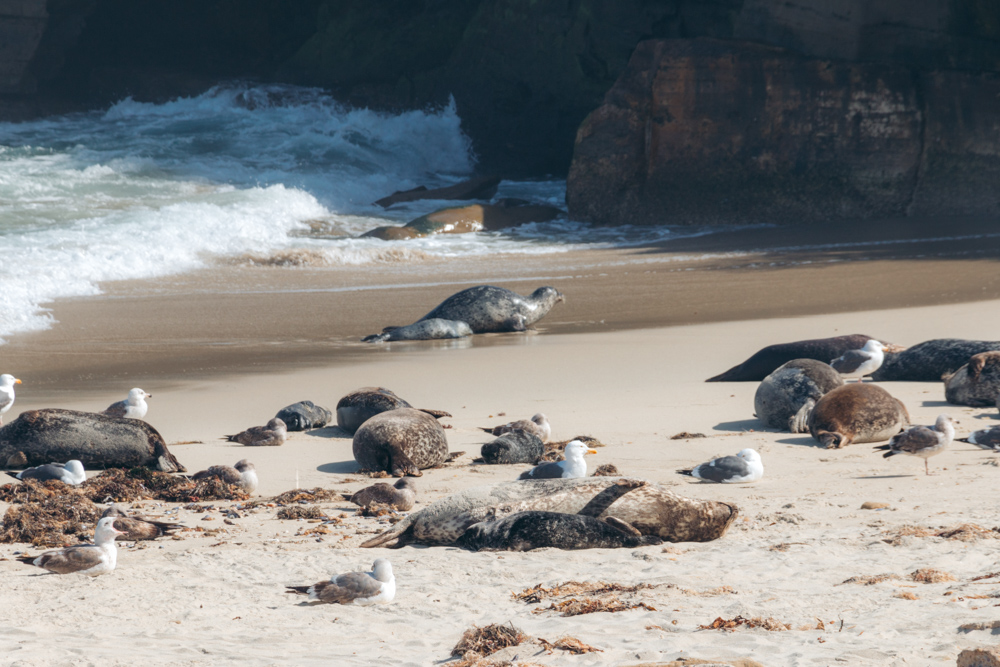
Differences between Seals and Sea Lions
Two species of pinnipeds reside in the coastal areas of San Diego: the California sea lion and the Pacific harbor seal. Some locals swear that they saw elephant seals along the La Jolla’s coastline. These species, however, are temporary visitors that mostly prefer colder climate of Northern California.
READ MORE: Where to See Marine Wildlife in California
To the untrained eye, all pinnipeds may look similar. Yet they have many differences. The La Jolla seals are grayish in color, have smaller flippers, and look plumper. They quietly bask in the sun or wriggle on their belly when on the shore.
The sea lions are louder. You can hear their social “chatters” from a far while walking down a boardwalk above the La Jolla’s beaches. These species also look slightly different. Brownish in color, the sea lions live in groups and have small, but noticeable ears. Their flippers are larger. The sea lions use them to support themself while “walking” on the beach.
The San Diego seals and sea lions can be rarely spotted together. In fact, the Pacific harbor seals hardly ever “hang out” together with their own species, unless they nurse their pups.
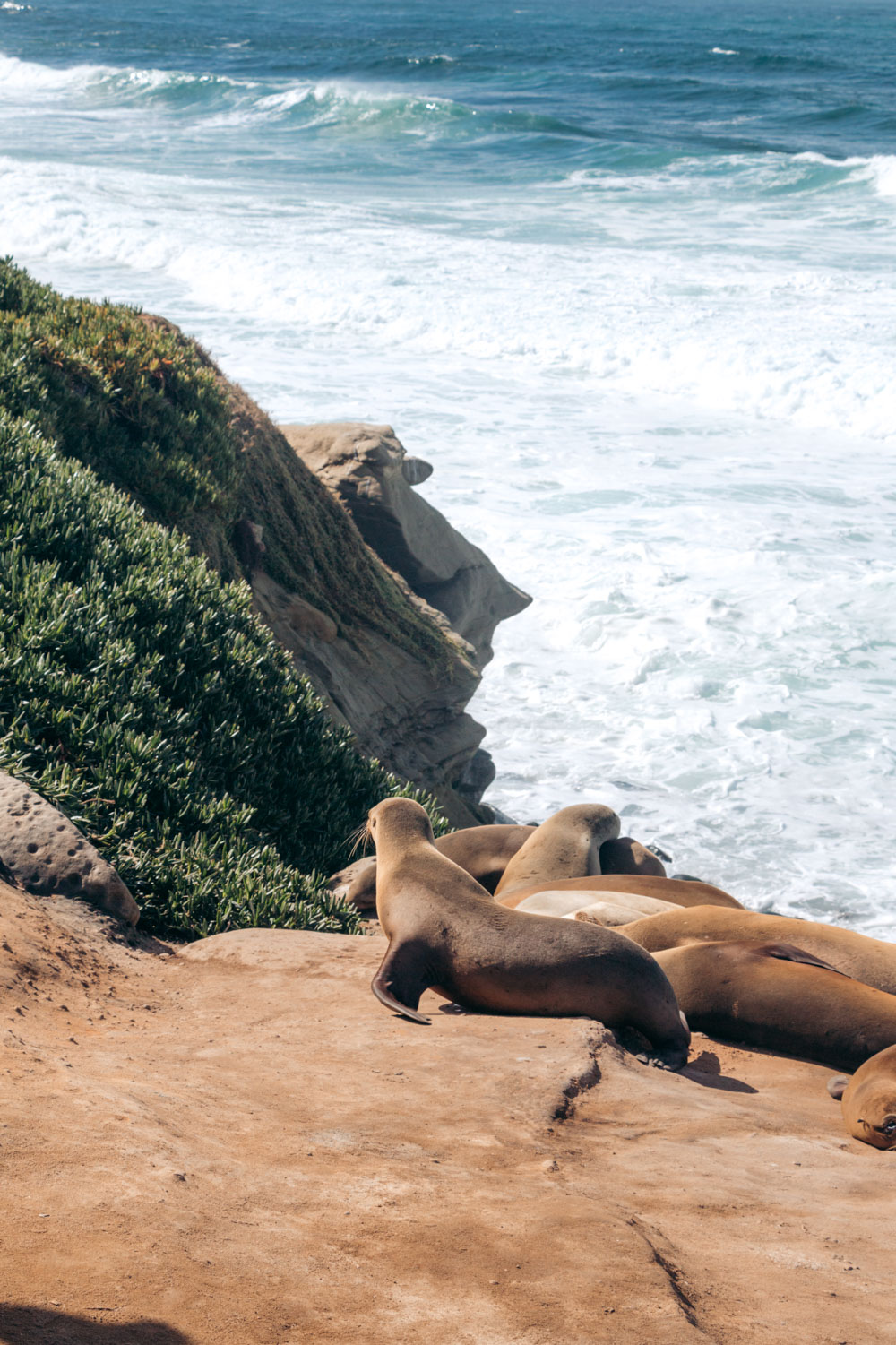
THE 9 BEST PLACES TO SEE SEALS AND SEA LIONS IN SAN DIEGO AND LA JOLLA
The seals and sea lions are a common sight in the coastal areas of San Diego. You can spot some pinnipeds on rocks and boulders while admiring the city skyline from a cruise ship. Others linger near piers, waiting for the scraps from fishing boats.
The majority of the San Diego seals and sea lions, however, prefer the sunny beaches of La Jolla. Clustered in small groups or keeping their distance from the other pinnipeds (the loners are usually harbor seals), the marine mammals spread along the coastline, below the La Jolla Ocean Front Walk.
You can see the adult seals soaking up the sun, nursing moms following their pups to the ocean, or a couple of seal babies splashing in the ocean near the shore while walking along the boardwalk between the Cave Store (the store is the only access to the Sunny Jim’s Sea Cave from land) and Children’s Pool.
Over the years, some of the beaches within this three-quarter of a mile shoreline has become local marine mammals’ favorite haul-out places. But let’s give names to these and some other areas where you can see or expect to see the San Diego seals and sea lions.
Where to Watch Seals and Sea Lions in La Jolla
1. Sunny Jim’s Sea Cave
The Sunny Jim’s Sea Cave is the only cave in La Jolla that you can access from land. As I mentioned before, it can be entered from the Cave Store. Narrow stairs start at the store’s floor level and descend to the shore. The experience is quite surreal. At the bottom of the stairs, a spacious cave with a view on the ocean opens up.
Occasionally, a group of sea lions snuggle on the rocks inside the cave. Some just swim nearby, oblivious to the observers staring at them from the cave.
The probability of spotting the sea lions inside the famous La Jolla’s cave varies by weather, seasons, or simply moods and needs of the pinnipeds. Apart from it, admission is required to step into the tunnel leading to the cave.
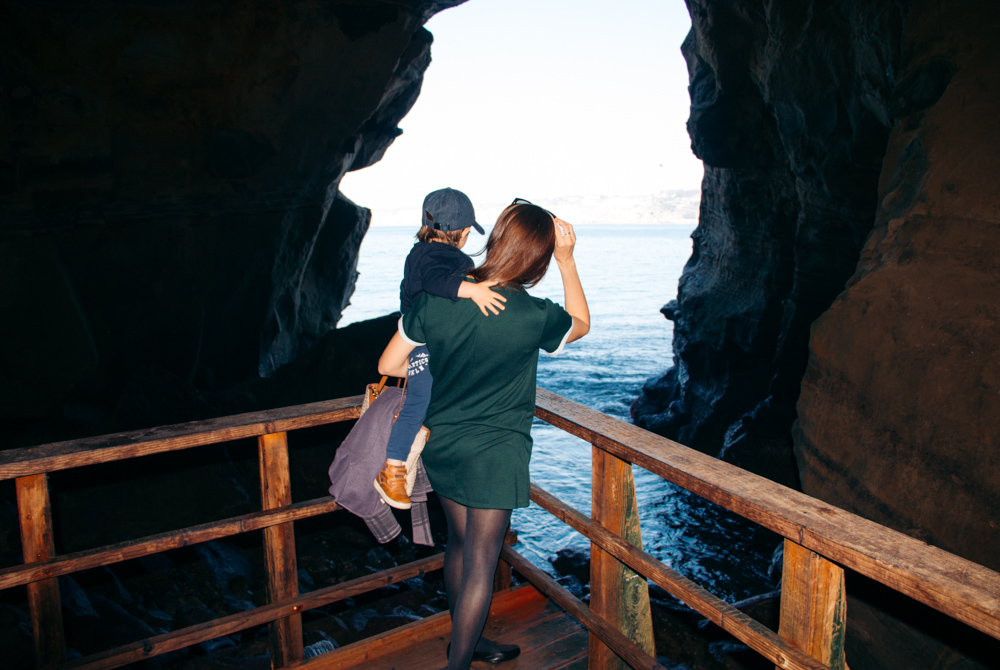
2. La Jolla Cove and La Jolla Cove Beach
The sea lions haul out at La Jolla Cove all year round. You can see the adults and babies lounging on the rocky points and sunbathing at all times. The marine animals seem to pay little to no attention to passerby who venture onto the rocks for better pictures. The area, however, may be slippery.
Some of these seals relocate to La Jolla Cove Beach in early morning or late afternoon when the area isn’t crowded. You can descend to the beach or admire the pinnipeds from the boardwalk.
TIP: In the former case, make sure to keep a distance. Seals and sea lions are wild creatures. They can show signs of aggression when they feel threatened. This behavior is especially typical among nursing seals and sea lions that will protect their pups fearlessly.
3. Boomer Beach and Shell Beach
If you continue to walk along the boardwalk, a small area known as Boomer Beach will stop you in your tracks. The San Diego sea lions sunbath on the beach daily. Often you can see them frolicking in the shore break, away from the popular sea lion’s hotspots.
Adjacent to Boomer Beach is Shell Beach. From time to time, the San Diego sea lions can appear on the sandy beach famous for its peculiar tide pools that open up at low tide. Yet the marine animals don’t linger here for a long time as more beachgoers like to spread out their towels on the sandy stretch of land in the late morning or afternoon.
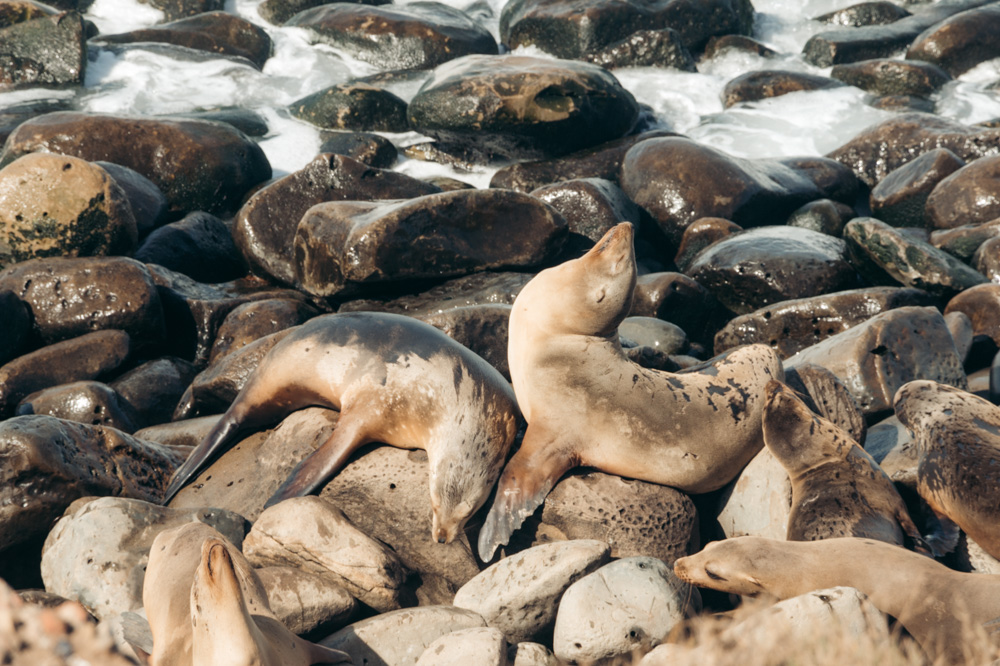
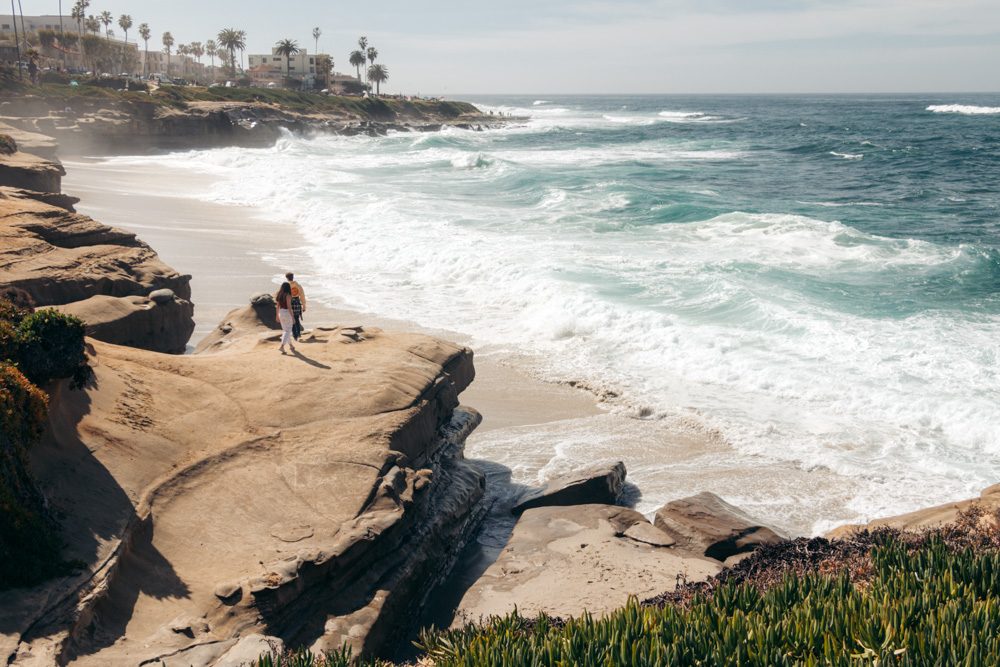
4. Seal Rock
The first recorded haul-out site of seals in San Diego, Seal Rock is still a safe haven for the local pinnipeds. Taking advantage of the rock’s offshore locations, the marine mammals relax on the rocky surface and embrace the coolness of the occasional currents without a fear of being harassed. Yes, unfortunately, the harassment of seals and sea lions in La Jolla and San Diego is still an ongoing issue.
5. Children’s Pool Beach
Protected from the forces of the ocean by the concrete seawall, Children’s Pool is the favorite place for the La Jolla nursing marine wildlife to haul out. For San Diego’s visitors and locals, it’s the likeliest place to see the wild harbor seals.
Controversy has surrounded Children’s Pool (formerly Casa Beach) since the seals claimed this area. At some point, the City considered dredging the beach and moving away the seals. Fortunately, there were always those who opposed these views.
Today, Children’s Pool is the only NOAA- (National Oceanic and Atmospheric Administration) recognized mainland harbor seal rookery between the U.S./Mexico Border and Ventura County.
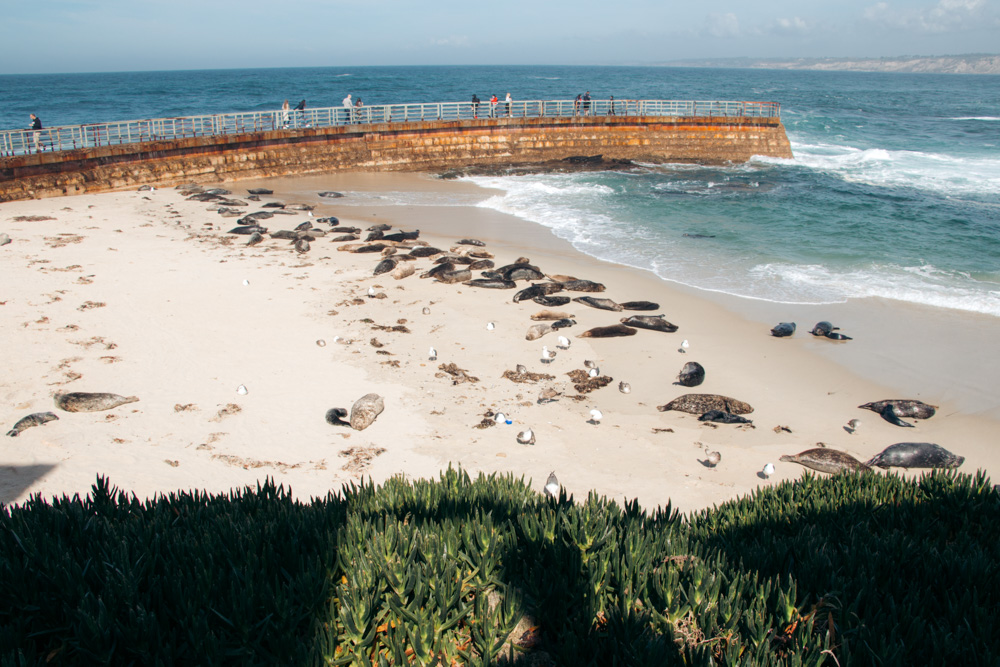
6. San Diego-La Jolla Underwater Park
Have fins, will swim. It the San Diego-La Jolla Underwater Park area, the swimming session often includes viewing the locals seals and sea lions in or from the water. La Jolla offers different kayaking and snorkeling tours. So choose the one that suits you best and get up close and personal with the San Diego seals and sea lions.
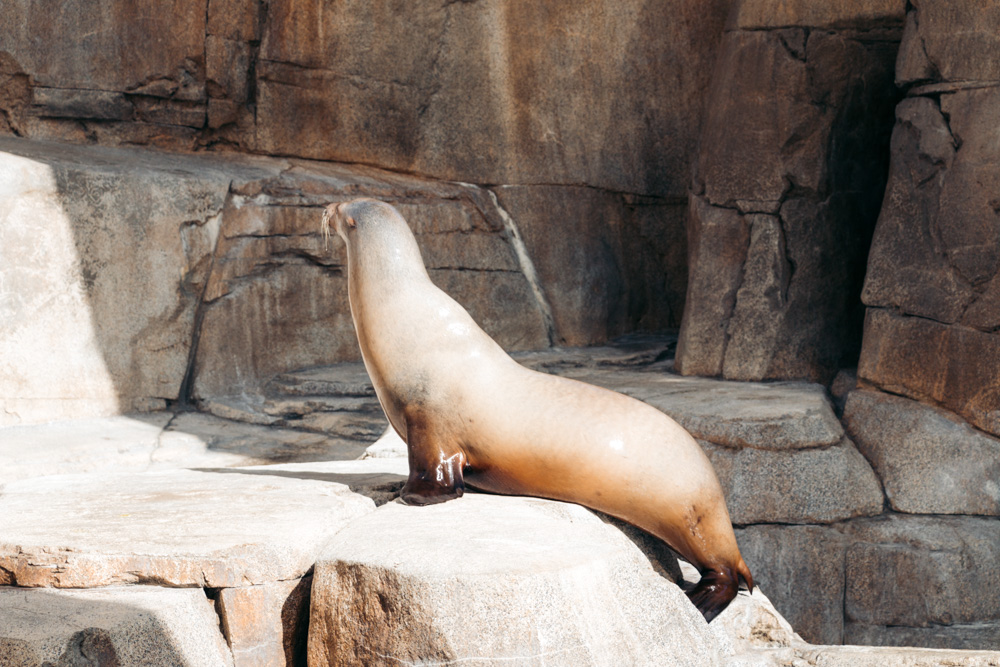
Where to Watch Seals and Sea Lions in San Diego
7. San Diego Harbor near Point Loma
I saw the San Diego seals and sea lions from a cruise ship sailing near the Point Loma peninsula before I even knew about the seal rookery and favorite haul-out sites in La Jolla. The seals like to forage in the waters between Coronado Island and Point Loma. Often you can even see them lounge on the buoys in the middle of the channel.
8. Shelter Island
Some hungry sea lions yank out on docks on Shelter Island. The animals linger near fishing boats, anticipating an easy meal consisting of scraps from the watercraft.
9. SeaWorld San Diego
Not the first place to see the wild seals and sea lions, SeaWorld San Diego do harbor some of them. Most of these pinnipeds have been rescued. Some seals and sea lions were born in captivity and don’t know how to survive on their own in the wild.
With that said, the pinnipeds in SeaWorld San Diego are hardly wild creatures any longer. On top of that, there are many arguments about cruel treatment of the animals here. All in all, SeaWorld is one of a few places where you have a 100% probability of observing the San Diego seals and sea lions.
The Best Place to Watch Seals and Sea Lions in La Jolla and San Diego: Map
The Best Time to See Marine Wildlife in La Jolla
I’ve never seen La Jolla’s coastline deserted by seals and seal lions. Some pinnipeds venture back into the ocean while others have just hauled out. This constant change ensures that the San Diego’s beaches don’t get overcrowded by the seals and sea lions. On the other hand, you can always count on their presence, especially along the coastline of La Jolla.
Most of the seals in the San Diego region haul out between late April and early June. And even these animals prefer to escape the hot beach during the day, enjoying the cooler sand early in the morning or later in the afternoon.
Mid-December though mid-May is known as harbor seal pupping season. Children’s Pool is closed for beachgoers during this time. Yet even from the boardwalk you can witness the birth of a new life.
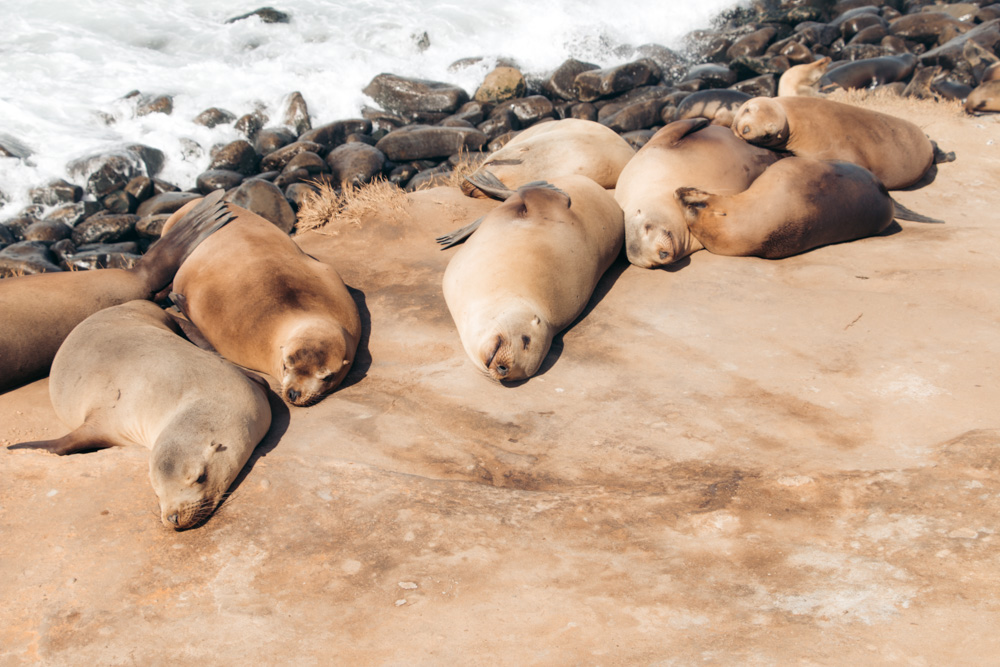
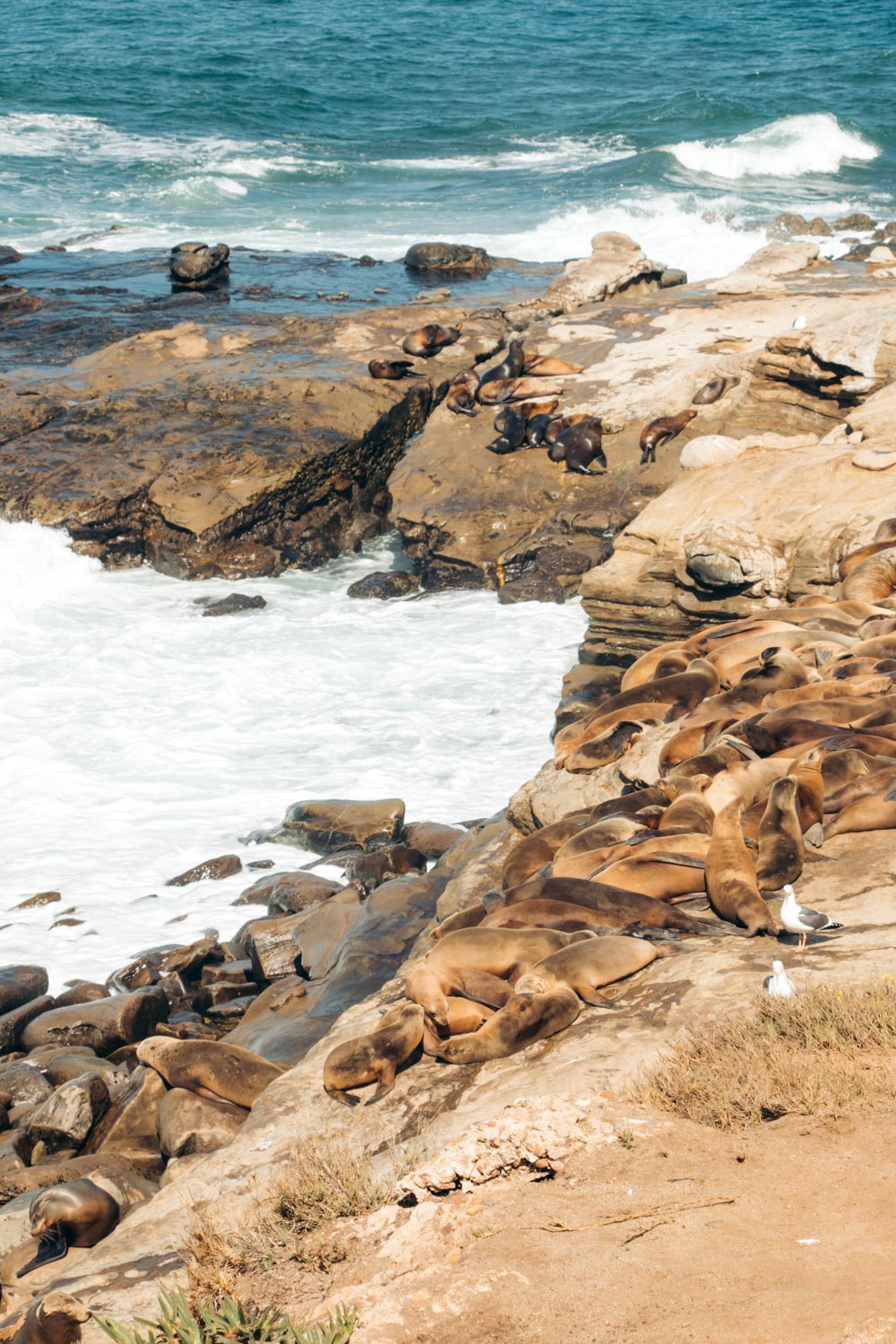
How to Watch Seals and Sea Lions in the San Diego Area
The San Diego seals and sea lions are wild creatures and can be unpredictable. To protect yourself and the local population of the pinnipeds, please follow a few simple rules.
Keep Your Distance
It’s uncommon for seals and sea lions to haul out in the urban environment. Despite the city’s noise, these pinnipeds do it regularly. Yet like most marine mammals, the San Diego seals and sea lions need to stay undisturbed.
Any annoyance whether its’s a loud sound, curious touch, or cruel treatment such as siting on the seals (this type of harassment still exists) stresses out the marine animals, which affects their health. So be a responsible visitor and keep a distance at all times.
Don’t Feed Marine Mammals
Do not feed the San Diego seals and sea lions while taking a stroll along the coastline. Human food, even raw fish from a store, can make the pinnipeds sick. Keep in mind, the seals and sea lions are excellent hunters. With plenty of small prey roaming in the coastal waters, they can catch as much food as they need.
Don’t Litter
Any trash left on the beach can end up in the stomachs of the pinnipeds. Whether it will be eaten by the seals and sea lions themselves or by fish the pinnipeds hunt on, the human food is unhealthy for the wild marine animals.
Bring a Zoom Lens or Binoculars
Some pinnipeds may be too far away from a separating rope or the boardwalk. Instead of disturbing the San Diego seals and sea lions, use a zoom lens or a pair of binoculars to get a better look or/and a picture of them.
